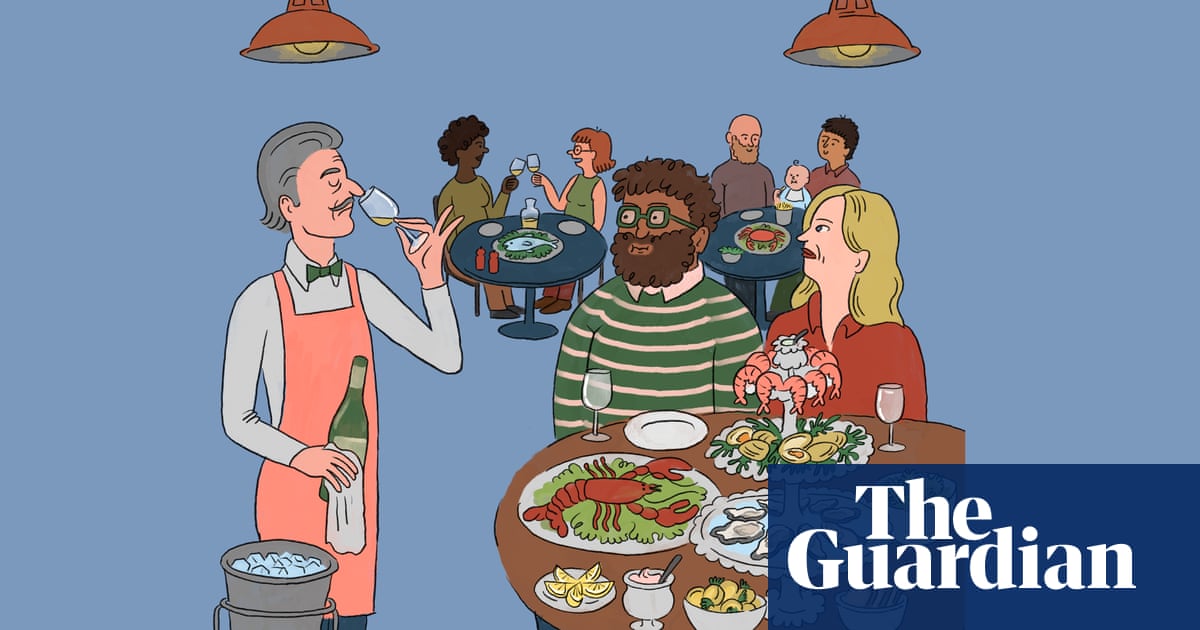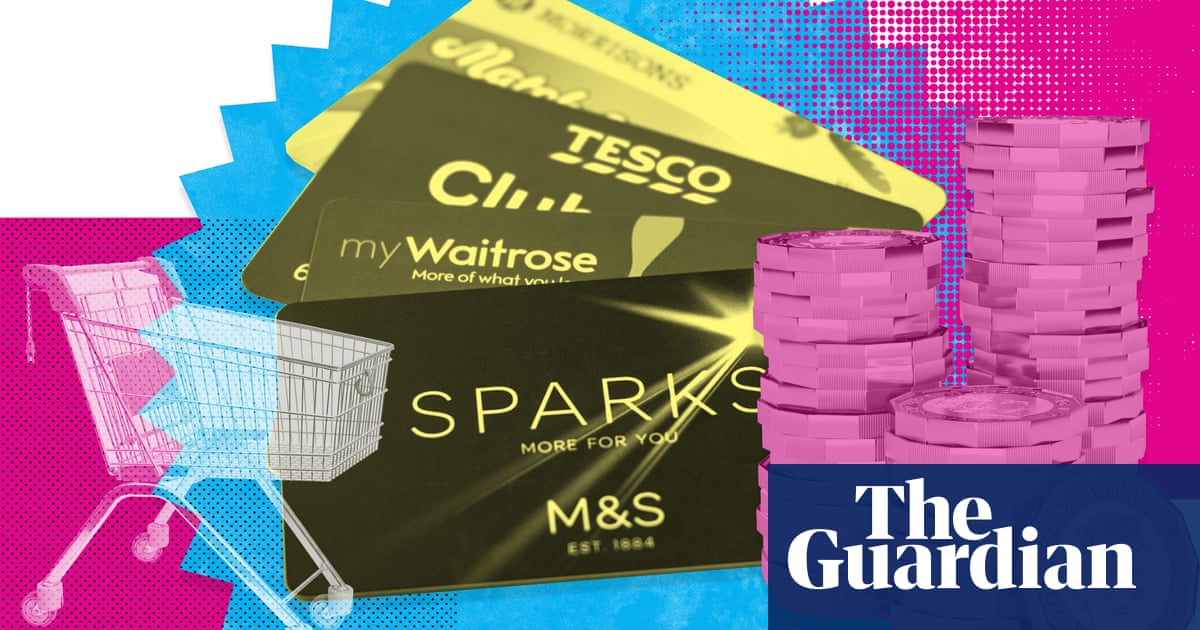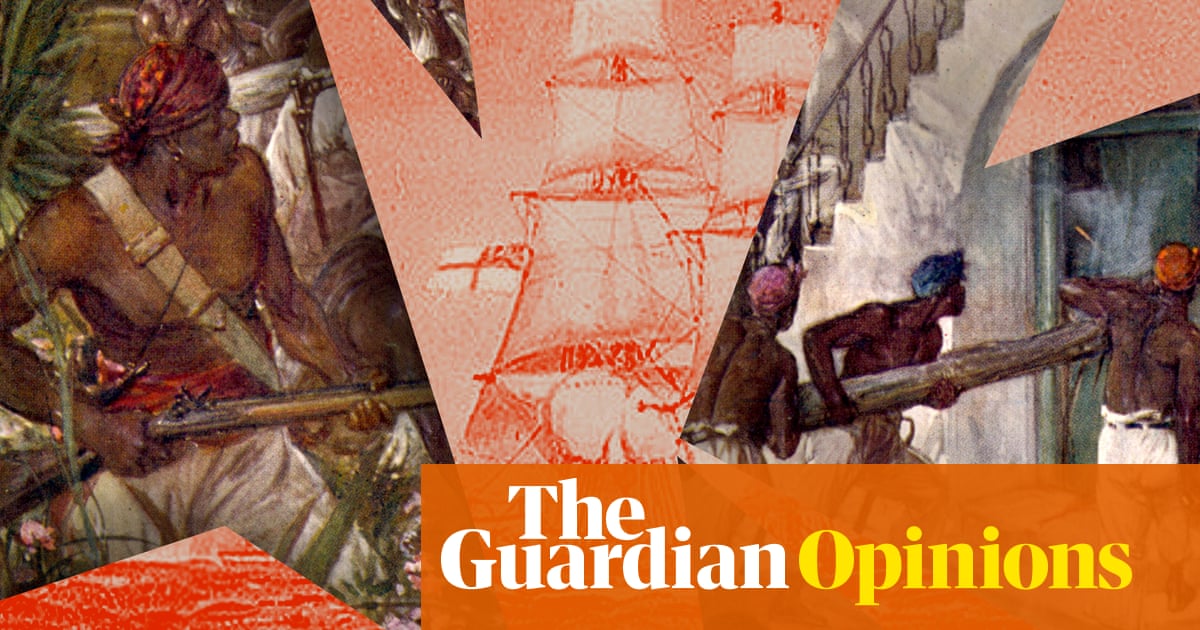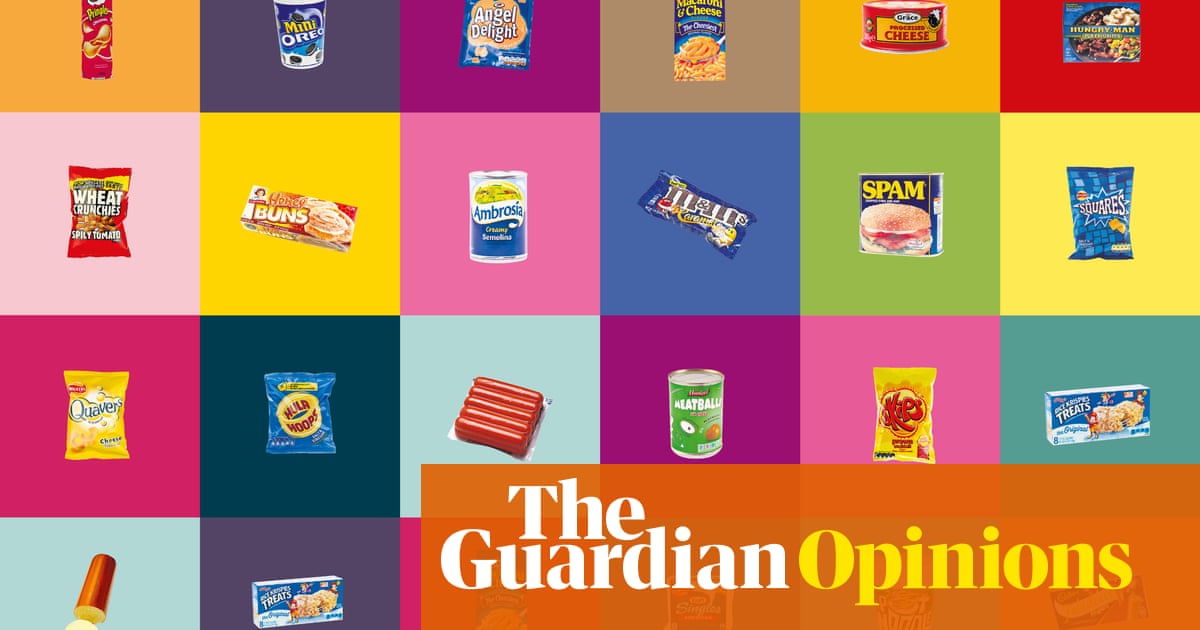
Iwas a 14-year-old schoolboy when the rapper 50 Cent released Get Rich or Die Tryin’. The most precocious kids in class declared the debut hip-hop album an instant classic and hailed the rapper’s legend: “He’s been shot nine times, you know?” The failed attempt on 50 Cent’s life was at the centre of his sales pitch as the bulletproof king of gangsta rap. My friends and I were easily sold. His debut was the bestselling album of 2003, selling 12m copies worldwide. Curtis Jackson may have been born black and poor in New York, but as 50 Cent, he was now worth $30m.
There are few things we find more compelling than a fable of overcoming the odds and achieving self-made success. Everyone loves an outsider, because deep down most of us believe we are one, and each generation has its own version for inspiration. For me, it was the constant reinvention of the hustler made good in hip-hop that stuck.
I grew up in Tottenham, north London, a multiracial area between the city and the Hertfordshire suburbs with a character defined by its then underperforming football club and its Caribbean, Ghanaian and Turkish Cypriot communities. My whole life, this corner of the city has been notorious for the anti-police riots that broke out in the 1980s. A Jamaican-born mother had died after her home was raided by police officers, a policeman was killed in the ensuing revolt, and the tension between the residents and the authorities has festered ever since.
By 2003, much of the area could have slipped with ease into the background of a rap video in Queens. My friends and I wore American hip-hop streetwear: baggy Akademiks jeans, Fubu tops and Timberland boots. New-Era baseball caps felt like part of our school uniform. My school had a high intake of students poor enough to qualify for free school meals, but even the poor kids wore luxury streetwear. In the year I completed my GCSEs, 75% of my fellow students failed to get the five A*-C grades necessary to go on to further education. It is unsurprising that the hustler was an inspiration to a student body of underdogs.
At the time we started school, the prime minister, Tony Blair, was announcing his plan to create a knowledge-based economy, and his ambition to get 50% of young people through university. “Aspiration” had become the political buzzword. When there were outbreaks of violence in urban communities like mine, the government blamed a lack of drive, and in 2007, it launched the Reach mentoring scheme, with the focus on “raising the aspirations and achievement among black boys and young black men, enabling them to achieve their potential”.
The problem, certainly in my neighbourhood, was that it was aspiration itself, rather than the absence of it, that drove young men to desperate measures. In recent decades, aspiration has been heavily wrapped up not in what we aim to do, achieve or create, but in what we can afford to buy. Young adults and teenagers have been under more and more pressure to be successful, with fewer means to do so.
Over the past century, political parties and brands have spent vast sums of money on trying to get our attention and influence our decisions. Today, that attention is increasingly in the hands of a new type of hustler. Influencers with thousands or even millions of social media followers can convert their following into an income by making their feeds a living billboard or a peep show you pay to subscribe to. Ten years ago, this pseudo-profession hardly existed, and now the highest-earning influencer, Kylie Jenner, can earn up to $1.2m from a single post on Instagram. Social media introduced a profit motive into our social lives, with a profound impact on the way we behave.
Since I left university, the economic promise made to middle-class millennials has turned to dust. In 2008, I was an economics undergraduate learning about how boom and bust had been banished. We all know what happened next: the global economy crashed. Graduate schemes disappeared before my eyes and the next decade did not live up to the promises made in the one before. As wages dropped and employment opportunities fell, our consumer spending got higher and personal debt rocketed. And this was before Covid-19 struck and making money from home became the only game in town.
It is in this climate that “influencing” seems a viable career, providing a potentially luxury lifestyle with a low entry threshold. Once you have figured out how to get people’s attention, you can monetise yourself as both product and salesman. Often we do not even think of the most successful influencers as digital workers, since they market themselves as relationship gurus, financial experts and activists. Some influencers even offer teaching on how you can emulate their success. One YouTuber named Patricia Bright, who has more than 2.8 million subscribers, has written a book titled Heart & Hustle, which promises “to show you how to hustle like I do”.
The problem is that success in this world is not as attainable as some make it seem, and addiction to accruing followers by any means necessary is warping human behaviour on and offline. For many influencers, deception is lucrative, and becoming increasingly extreme. There are some feigning their wealth, their followers and even their ethnicity while hawking dubious products to their followers. In recent years, influencers have sold laxatives as health drinks, promoted music festivals that never happened and been caught up in serious fraud and multimillion-dollar Ponzi schemes. Companies that sell regulated products such as cosmetic surgery procedures and financial services have increasingly turned to influencers to market their goods, away from scrutiny by the authorities.
The instore music complements the skimpy clothes that have made Fashion Nova in Los Angeles a market leader in ghetto chic and timeless hoochie wear. You can buy similar styles in the store next door, an unbranded clothes shop called Mode Plus, or in the budget womenswear shop opposite, called Queens (the menswear shop next door is Kings). The same tight party dresses produced for cents and sold for dollars are for sale in all of them, and can be found in any other makeshift store in low-income Latina communities from Los Angeles to London. However, Fashion Nova has come a long way from its humble first store in LA’s Panorama City Mall.
The company’s impact could not have been predicted when that store was opened in 2006 by an industrious Iranian American named Richard Saghian. But Saghian knew the world was changing. He wanted his company to target the kind of girls who went to clubs to dance to hip-hop and desired to be on a VIP table – girls who wanted to be famous. Most importantly, they had to be able to turn heads on Instagram.
From about 2013, Fashion Nova began recruiting micro-famous brand ambassadors who fitted the vision. Young women with big followings were given free clothes, and those with huge ones were paid a fee to post online. They were told to always tag Fashion Nova to help its followers grow and boost awareness. Some ambassadors were also allowed to earn money from sales of clothes via a discount code that paid them a commission. Where the company achieved major success was in its aggressive penetration of the hip-hop scene. It paid rappers for shoutouts in songs and signed up artists such as the reality TV star turned rapper Cardi B as highly paid brand ambassadors. It even gave the African American and Latinx entertainers who now dominate US pop culture their own Fashion Nova lines. The company had bought a seat at the table. But it also stole scraps from it, too.
In February 2019, only a day after Kim Kardashian was photographed in a gown by the exalted French designer Thierry Mugler, Fashion Nova began selling a replica. When Kim’s younger half-sister, the even more influential Kylie Jenner, threw a star-studded 21st birthday party, dresses worn by guests were cloned within hours. Fashion Nova was not just fast fashion, it was the fastest. The process of recycling runway designs is well known and widely practised, says Bimi Fafowora, who worked for Nova for nine months overhauling their marketing and branding. “Celebrities wear these gorgeous gowns, they release it on social media, fast-fashion brands pick up on it, release it to the mass audience,” says Fafowora. “These people wear them for about a day … because on Instagram you can’t wear anything twice.” (Fashion Nova did not respond to a request for comment.)
As Fafowora and I sat on the roof of the Nomad, a luxury London hotel frequented by holidaying footballers, she remarked, “I think we’re in an age where people aspire to something greater, something higher, more famous, more popular, more loved, and fast fashion has allowed for that. It’s allowed for people to shorten the gap between [them and] unattainable celebrities.”
In 2021, Fashion Nova surpassed 20 million Instagram followers. Three years earlier, it had become the internet’s most-Googled fashion brand, and the company posted revenues of $294m. Fashion Nova invites aspiring influencers to buy and model its clothes, then tag their photos @fashionnova and #NovaBabe. More than 10m posts have been made by ordinary young women auditioning to get the brand’s attention. Each is hoping to become a paid “NovaBabe”, an ambassador who receives free clothes, the Instagram equivalent of being on the VIP table.
Fashion Nova’s website has a callout for aspiring influencers: “Wannabe a #NovaBabe? Do you have what it takes to be a #NovaBabe? Are you the OOTD [outfit of the day] queen who can literally rock anything?! Do you have your own style that is admired by others?? If that’s you, we want you to join our #NovaSquad!”
Many aspiring influencers pay for hauls of Fashion Nova clothes to review and model, viewing it as an investment in what they hope will become a job. In reality, they’re providing the company with free labour as promo girls, giving the brand adverts they did not have to pay for. The small number of women the company actually hand-picks for free clothes tend to have a similar aesthetic. They are young, most of them with narrow waists, wide hips and thick lips. Many have hourglass figures and wear clothing that clings to their skin: an aesthetic known as “Insta baddie”. If these women are black, they looked mixed-race or light-skinned, and if they’re white, they mostly have dark hair and bronzed skin.
Today, Fafowora runs a boutique branding firm that recruits models and provides marketing content for new fashion labels trying to replicate Fashion Nova’s success. I ask her how the brands choose their models. “They base it on the look that’s trending right now: the Kardashian look,” she replies. “It’s very curvaceous, mostly racially ambiguous.”
A new wave of pop-up talent agencies such as the London-based Above and Beyond Group swipe through social media to scout for models and influencers who match this brief. Their rosters looks diverse, but although most are not white, there is a homogeneity of ambiguous beige and light brown.
Fashion Nova may not have created this trend, but it has reinforced it. Fast-fashion companies throw vast amounts of money and products at the young women they pick to wear their clothes, and they have created a new economy that appears to offer easy jobs to the prettiest girls on the internet. Beauty has always been a commodity, but now it is far easier for women to monetise it themselves – if they have the right look. The belief among many young women that being desirable pays has led them to not only surgically change their shape, but in some cases to even fake their ethnicity.
At the age of 19, Aga began noticing that the pictures she took of herself and posted online were getting more and more attention. “I didn’t really have an approach. If I went out and I liked how I looked, I would take a picture.” The grid on her Instagram page has an all-too-familiar grammar.
Aga’s outfit of the day – whether fitted jeans with a crop top, a jumpsuit or a patterned polyester dress – hugs her full hourglass figure. Underneath each image she writes a playful caption such as “A daily dose of your thickums”. Her skin is a light caramel brown and her hair is dark. Most of the selfies are taken in front of her bedroom mirror.
Aga, from east London, told me she had no desire to be internet-famous, but popular theme pages celebrating curvaceous women found her pictures and reposted them. One post was viewed over 147,000 times, and soon thousands of men began following her. Aga became a local pinup. “I think nowadays people just love thick [curvy] girls,” she says.
In 2018, Aga’s pictures also caught the attention of fast-fashion companies and brands investing heavily in influencer marketing. It was then she started to think, “Let me try to make more out of this.” She was studying accounting, but saw providing promo as a potential side hustle. She turned her Instagram page into a business account that gives users metrics about who is looking at their page, and then began tagging fashion brands including Fashion Nova. Not long after, they started giving her clothes, as did its arch-rival Pretty Little Thing. Aga had the desired aesthetic and the right audience. She also began working as an affiliate for Protein World, a supplements company, which gave her a discount code to promote to her followers. She got paid a commission for everybody who used her code on purchases.
When I interviewed Aga in 2019, she had 50,000 followers. Months later she surpassed 250,000. At the time of writing, most of the money she makes online is from ads and affiliate work for local companies. She became one of a dozen ambassadors for a London-based chauffeur company targeting those in the inner city desperate to present themselves as successful. (Cars could be rented by the hour. They didn’t need to go anywhere.) The company regularly recruits attractive young women with significant numbers of followers to act as digital promo girls for their largely male audience. Each ambassador generates an income from the people who use their discount code. The ambassadors have an almost uniform aesthetic – light brown or of mixed heritage and ethnically ambiguous. Aga fitted in.
In September 2018, the teenager photographed herself in an outfit composed of items she had been given to promote: clothes, phone case, eyelashes, and even hair, which came courtesy of a small afro hair store based in the east Midlands. In the picture, she is standing in her trademark pose. Her hips are wide and her waist is so narrow it looks like an optical illusion. Her skin is brown, her lips are full and her wavy black hair is in cornrow braids, a popular afro hairstyle. She is the picture of a confident and beautiful young black woman. The only problem is, Aga is not a black woman. She was born in Poland and would become one of the many white influencers accused of “blackfishing”.
In November 2018, a young writer named Wanna Thompson fired the first shot with the tweet: “Can we start a thread of all the white girls cosplaying as black women on Instagram?”
A post was shared thousands of times with the before-and-after pictures of young white women between the ages of 17 and 21 who had transformed themselves from having pale skin, straight hair and narrow features into having brown skin, full lips and wavy hair with the help of dark makeup, contouring and wigs. There are even YouTube videos showing you how to do it. Emma Hallberg, a Fashion Nova ambassador with the appearance of dark brown skin, had built up a loyal base of over 300,000 followers, many of whom believed she was of mixed heritage and who followed her for beauty tips.
When she was included in the list, her stunned followers messaged her to ask if it was true. Could she really be white? Hallberg replied that she had never claimed to be anything else. Some of her followers tweeted that they felt deceived.
For Aga, the controversy led to a huge increase in activity on her Instagram page. She was accused of pretending to be black, of racism, and even minstrelsy, referring to the old performance where white entertainers darkened their skin to mimic and mock black people.
“I did understand where people were coming from,” said Aga. “I’m a millennial. I am on social media. I see the trends and stuff like that, it’s not like I looked at my picture and thought they’re making up things from thin air, but what can I do about that?”
Aga is part of a generation that has only known a world in which the internet is supreme and the dominant aesthetic in youth culture is hip-hop. The genre’s music and fashion dictate not only what and who is desirable, but also the part you can play in its billion-dollar industries and the clothing companies attaching themselves to it for clout. To be shapeless and pale with narrow European features has little currency in the part of the internet where a Fashion Nova ambassador gig makes you a VIP. Today, many young white women in their teens and early 20s are conforming to this standard by contouring, and their racial transformation has an economic incentive, too: this cosplay actually pays. The ethics and politics of beauty trends are rarely discussed in a world where influencers happily sell their following to the highest bidder.
Fashion Nova has a simple model: it buys cheaply manufactured clothes and manages to glamourise them enough to sell them for a substantial profit. It would almost certainly not be the juggernaut success it is without the stardust of influencers. The brand captures all the contradictions of California, where its clothes are presented on the bodies of Los Angeles’s finest, but many of them are manufactured in the city’s hidden sweatshops.
Scattered across downtown LA, according to advocacy group the Garment Worker Center, an estimated 3,000 small factories employ Latina migrants to fill orders for brands like Fashion Nova. Demand is high, and yet, in the UK alone, more than 300,000 tonnes of the clothes produced end up in household bins each year, with less than 1% recycled. Aside from the environmental concerns, the industry also has a record of labour exploitation. From Leicester to LA, poorly paid workers are turning around the must-have celebrity dress of the day before tomorrow’s new flavour arrives. Influencers dress up to market these clothes under the banner of self-expression, but for the most part, the workers manufacturing them have little voice.
According to Marisa Nuncio, the director of the Garment Worker Center, 85% of factories in the industry are paying under the minimum wage. “Through our casework we’ve seen an average of $5.50 an hour,” said Nuncio. The minimum wage in California is $13.25 an hour. Undocumented workers are easy to exploit, not just because they are willing to work for less, but because they are too scared to mount wage disputes for fear of reprisals that could get them deported.
The Garment Worker Center soon noticed one company popping up again and again in complaints by factory workers: Fashion Nova. Overnight, it had become the company that sweatshops were fighting to win contracts with, and as they competed for work, their fees went down. Although numerous companies who supply garments for Fashion Nova have been found (in an investigation by the US Department of Labor) to have withheld and underpaid wages, Fashion Nova says it is not responsible for the practices of their suppliers. After they had been contacted by the labour department, in a statement to the New York Times, Fashion Nova said it had an “ongoing commitment to ensuring that all workers involved with the Fashion Nova brand are appropriately compensated for the work they do”.
Fashion Nova did not invent the fast-fashion model, but it appears to be better than any of its competitors at driving the demand for clothes manufactured to be worn just once, by turning a generation of young women into mass marketers without a care for what it is they are selling.
“Their model is built on creating the demand,” said Nuncio. “I feel like it is not even that someone like Fashion Nova is lying about who they are. They are actually creating [an] environment [where] people don’t care.”
In Fashion Nova’s flagship store in Panorama City Mall, the clothes on sale profit from messages of female empowerment. The brand promises that women can be as successful as NovaBabes like Cardi B. The rapper’s own fashion line sold out within hours. In the store, colourful tops proudly sport slogans such as “Equality” and “Independent Woman”, and yet Fashion Nova is a company owned and run by a man accused by garment workers’ representatives of profiting from clothes kept cheap by the exploitation of vulnerable women in his supply chain.
The customer service could be so poor that some fashion bloggers have accused the company of being scammers. Last April, Fashion Nova was fined $9.3m to settle charges that the company failed to refund buyers whose orders failed to arrive on time, or were never dispatched at all. In January this year, Fashion Nova reached a settlement with the Federal Trade Commission over allegations it had suppressed negative reviews, and was ordered to pay $4.2m. (The company continues to deny it had manipulated reviews.) However, none of this has stopped its boom in sales, or the queues of young women desperate for a Fashion Nova brand deal, or even just some free clothes. When it comes down to it, the company’s greatest success is as a dealer in hype.
This is an edited extract from Get Rich or Lie Trying: Ambition and Deceit in the New Influencer Economy by Symeon Brown, published by Atlantic books on 3 March and available at guardianbookshop.co.uk












